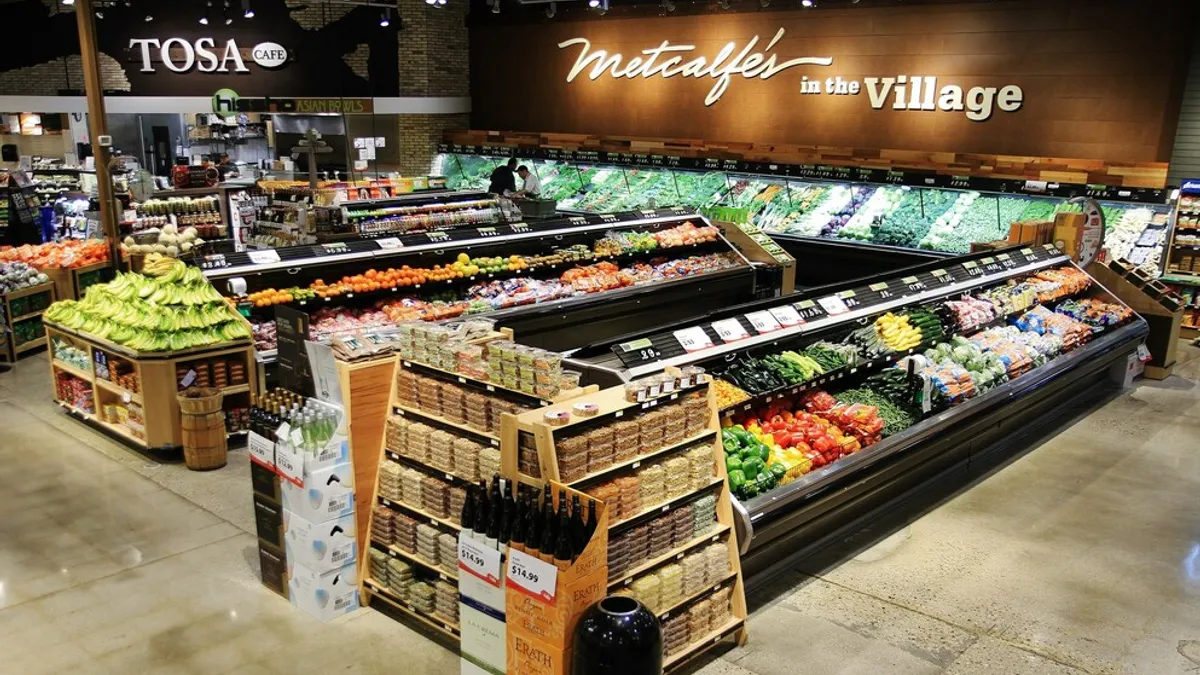Dive Brief:
- Grocery store bakeries aren’t quite growing as much in popularity or profitability as they were a year ago, according to Progressive Grocer’s Retail Bakery Review. Slightly more than 50% of retailers said they saw an increase in bakery sales this year, with an average 6.8% jump in net sales. That’s down from the 70% who reported average net sales increases of 11.1% in 2017.
- Cookies are the most popular item on bakery shelves this year, according to 45.5% of grocers — moving the treats up from No. 3 on the top-sellers list last year. Cookies also make money, with one in five retailers citing them as their most profitable bakery item. Cakes, second in profitability, also fell from first to third most popular seller this year.
- Dipping sales have impacted labor. Kimberly Holleman, buyer for Houston-based Fiesta Mart, told Progressive Grocer sales have been flat, leading to an increasing reliance on part-time labor rather than full-time bakers. “I see that a lot in the industry itself, really,” Holleman said. “Nobody wants to put the labor into it. It’s still a labor crunch. We want to do more with less.”
Dive Insight:
While in-store bakeries are not rising as fast as they once were, the section is still vital in drawing shoppers — and foot traffic. It's hard to resist the displays of breads, cookies and cakes, which can easily showcase the priority a store places on fresh items. And while consumers may outwardly say they are interested in better-for-you healthy options, a fresh-baked bakery cookie is an inexpensive and small indulgence.
But bakeries, like all sections of the store, have issues of margins to deal with. According to the sutvey, the percentage of sales eaten up by labor costs increased from 25.8%, up from 24.4% in 2017, even as the number of both full-time and part-time employees decreased. Retailers reported an average of four full-time and four part-time bakery workers this year, compared with 4.3 full-time and 5.1 part-time a year ago. To be sure, bakery work can be hard, often requiring workers to start their shifts in the wee hours of the morning or stand for hours. Turnover rates are high, so it’s important retailers adequately recruit, train and retain employees as they attempt to do more with less.
Although nearly a third of retailers reported the cookies, cakes, doughnuts, breads, bagels and muffins sold in their bakeries are made from scratch, more retailers today are likely to turn to partially-baked, thaw-and-sell and bake-off methods to help lower labor costs and foster consistency. In doing so, retailers must be sure to maintain freshness and the “just out of the oven” sensation that makes consumers willing to pay more in the first place. Bakeries also might cut back on variety, selling more of their most popular or seasonal favorites and less of everything else, in order to improve profits.
However, while trying to streamline the processes, bakeries should take care not to add too many preservatives, fats or hydrogenated oils to what they prepare. While these might help preserve the products, they also take away from the clean-label aesthetic of in-store bakeries. Consumers tend to look for products with ingredients they can easily understand — and may have less tolerance for freshly baked goods with some of these components, especially since many consumers have likely had experience with baking some of their own products at home and have an understanding of what is — and is not — needed for a cookie.
Despite challenges, retailers are optimistic. Nearly two-thirds said they expect sales to increase by at least 8% in 2018. In the end, supermarket bakeries will need to strike a balance between providing enough variety to lure customers to the department and keep them coming back, and focusing on their most popular and profitable items.
But the bakery also provides a coveted grocery store experience, one that cannot be replicated through online shopping. Even if a grocery store offers fresh cookies and bagels through e-commerce, the shopper doesn't get the opportunity to look at the offerings through the glass display case, see and smell what's new from the kitchen, or try new varieties. It makes sense for grocery retailers to keep the department robust — and keep shoppers coming into the store.






